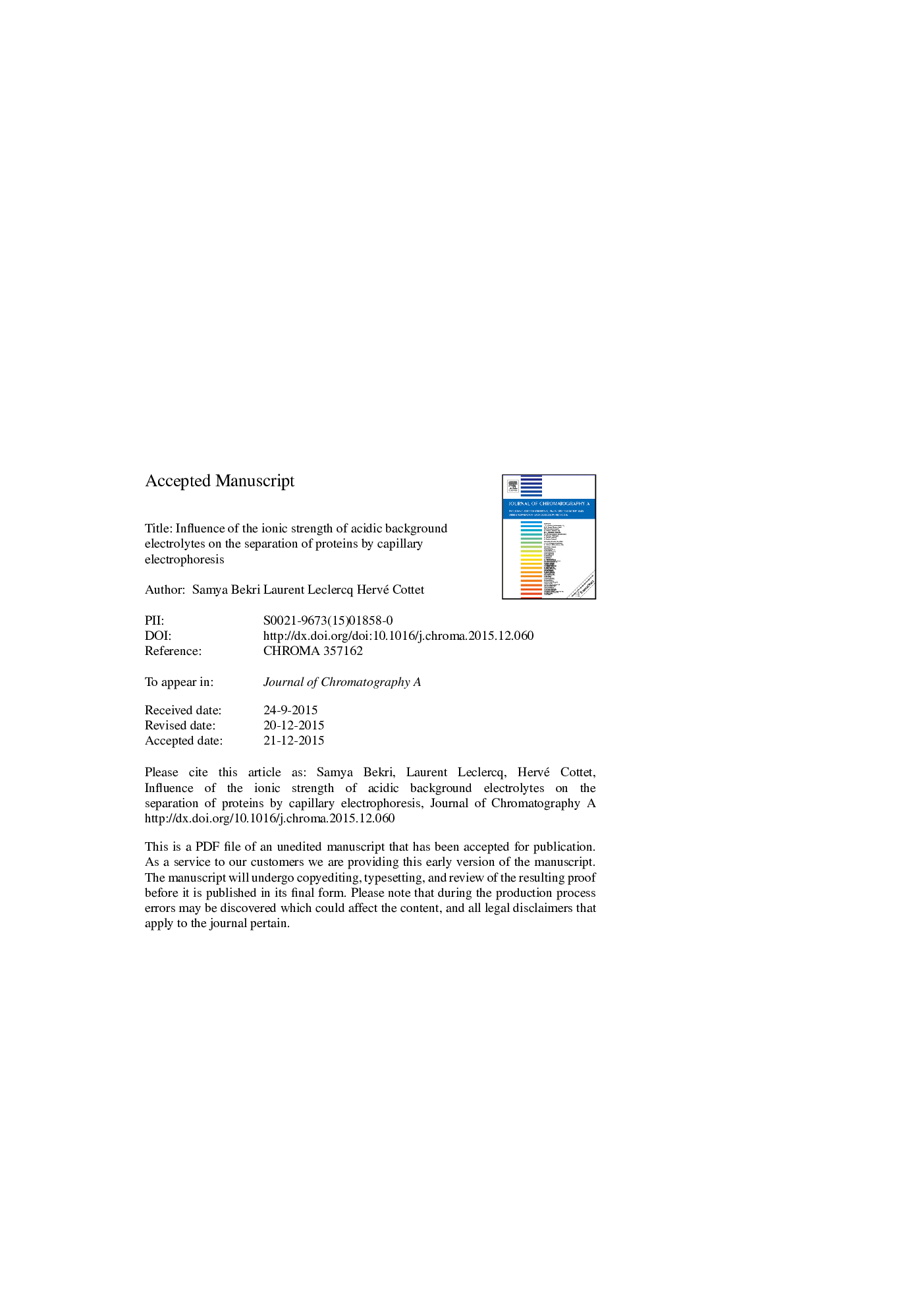| Article ID | Journal | Published Year | Pages | File Type |
|---|---|---|---|---|
| 7610311 | Journal of Chromatography A | 2016 | 22 Pages |
Abstract
The ionic strength is one of the key parameters for optimizing CE separations. However, only a few data are available in the literature about the ionic strength effect on the separation of proteins. The effect of ionic strength on separation performances is rather complex since many different parameters are involved: such as the protein effective mobility, the electroosmotic mobility, the separation efficiency via the electromigration dispersion, as well as the viscosity and temperature of the background electrolyte. In the present work, the influence of ionic strength on the electrophoretic separation of five model proteins has been investigated in acidic conditions, on successive multi-ionic layers coated capillary, in counter-electroosmotic mode with anodic electroosmotic flow. The decrease in effective and electroosmotic mobilities with increasing ionic strength were compared using the slope-plot approach, which is very helpful for understanding the observed changes in apparent selectivity and resolution. The relative decrease of the protein effective mobility was about 30-40% of the mobility determined at 5Â mM ionic strength per ionic strength decade. It was found that relatively low ionic strength (â¼5-10Â mM) was preferable to optimize the overall separation of the five model proteins.
Related Topics
Physical Sciences and Engineering
Chemistry
Analytical Chemistry
Authors
Samya Bekri, Laurent Leclercq, Hervé Cottet,
